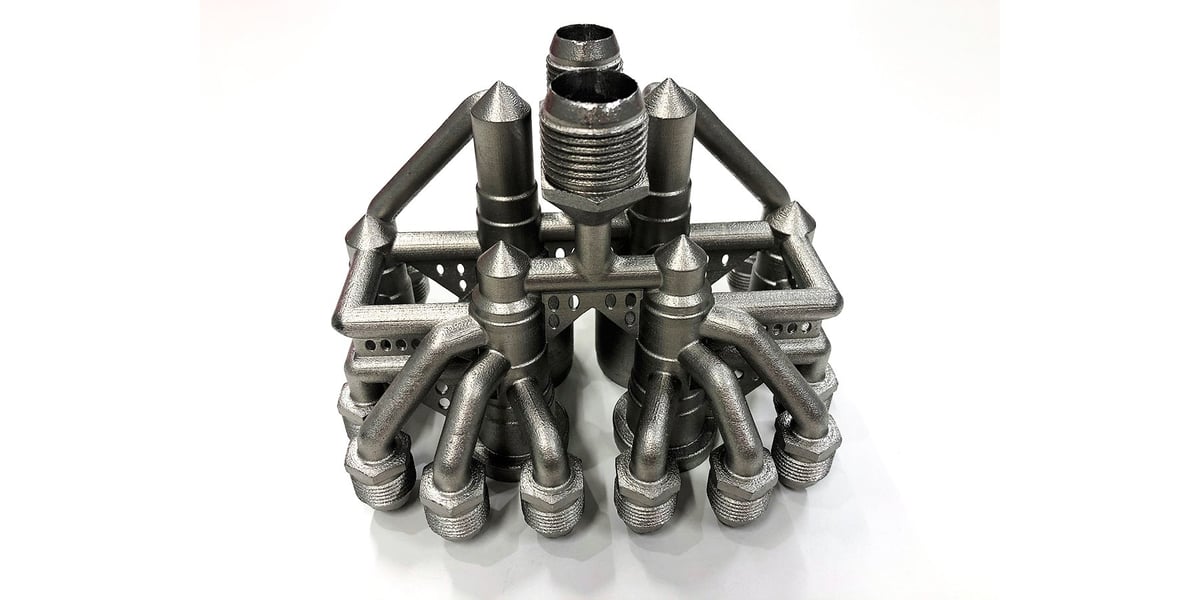Manufacturers have been making pipes, valves, and all manner of fluid and air routing parts for centuries, so what does 3D printing bring to the game, you might ask. The answer has to do with design, speed of production, and innovation.
Companies, especially in the energy industry, are turning to 3D printing these types of parts because they can redesign them for 3D printing to be far more efficient, weigh less, and take up less space. 3D printing enables very complicated geometries, such as intersecting pipes, complex internal baffles, and connector trees, that are near-impossible to machine or mold. Traditionally manufactured assemblies of dozens of parts, such as a rocket engine thruster, can now be 3D printed as ae single part, and delivered in a fraction of the time.
But it’s not just the oil and gas and aerospace industry turning to 3D printing for these types of parts; small and mid-size businesses, too, are realizing the value in delivering custom, often aftermarket, 3D printed manifolds, connectors, tube heat exchangers, and the like, in both metal and plastics, that address a specific problem in a particular market or on a specific product.
Apart from custom products and optimized designs, 3D printing can deliver standard fittings and pipes (or those that are obsolete and no longer manufactured) quickly and cheaply, especially for companies that may need one spare part but face minimum order numbers.
In this guide, we not only cover why 3D print parts are used in fluid and gas assemblies, but also who’s doing it, where to find printable digital models and order parts, and how the various 3D printing technologies stack up against traditional methods in terms of mechanical characteristics.
How to 3D Print Fluid & Air Management Parts
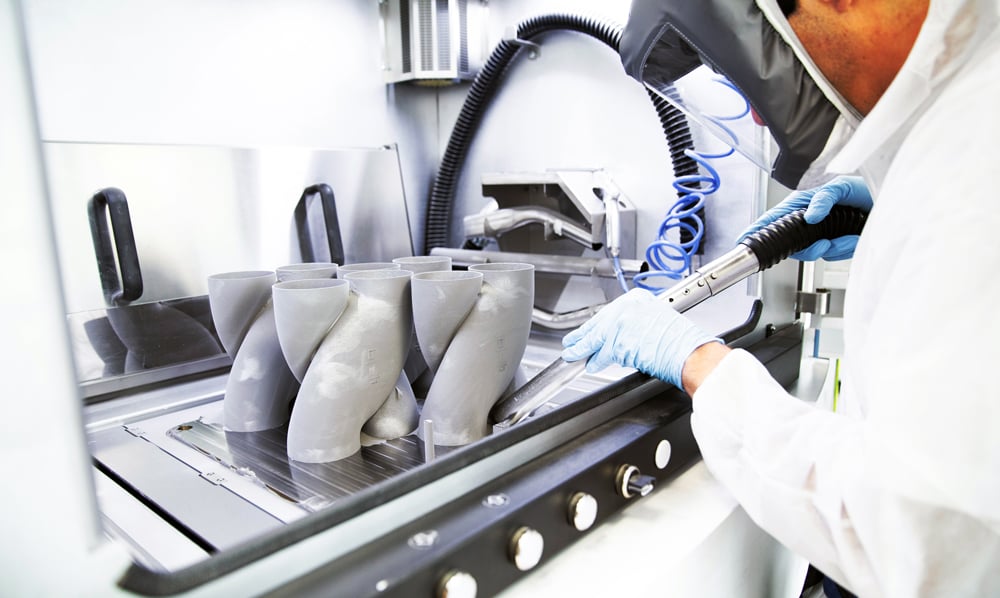
We covered a bit of the “why” 3D print these parts, and we’ll cover more in the examples below, but as a practical guide, let’s dive into the how first.
Finding or Creating a Digital Model for Your Part
Any part you need 3D printed starts with a digital model of that part, called an STL or a 3MF file, like this pipe connector below. If you don’t have a digital model, there are options for getting one. If you have a physical part, you can have it 3D scanned at a design service or 3D scan it yourself. If you don’t have a physical part, but just an idea for one, you can also turn to a design service or start with a similar model, found at a file repository such as GrabCAD, Printables, or Thingiverse, and change the design in computer aided design software (CAD), such as Fusion or even TinkerCAD for simple designs.
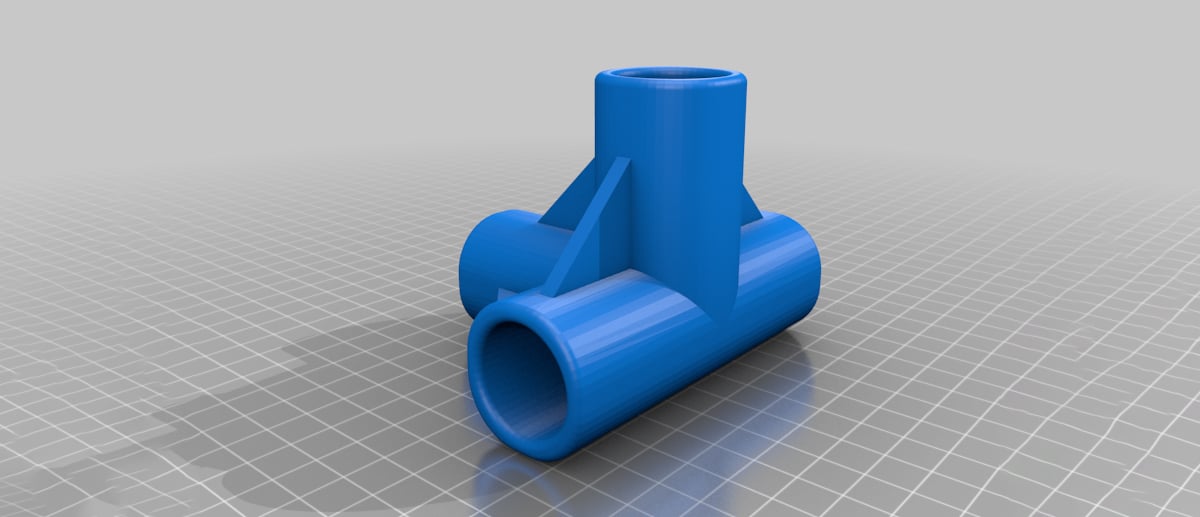
Once you have a digital model, you can 3D print it on your own printer or upload it to a 3D printing service, like Craftcloud, Xometry, or Sculpeteo. But which of the many materials and methods do you need for fluid or gas parts?
If you’re 3D printing a prototype of a part that you plan to take to mass production with injection molding, machining, or casting, you have a wide range of material, technology, and price options. The connector above (101.6 × 76.2 × 76.2 mm) will cost you about $13 printed by Craftcloud in the most basic material with delivery in a few days. If you wanted it printed in a durable, water-tight nylon (PA12) for functional testing, it would cost about $44. And if you wanted this part in 316L stainless steel, it would cost around $200 at Craftcloud and less as the volume increases.
If you’re printing a final part for fluid management you have several technology and material options depending on the pressures and stresses that your part will encounter.
3D Printing Technologies for Fluid and Gas Management Parts
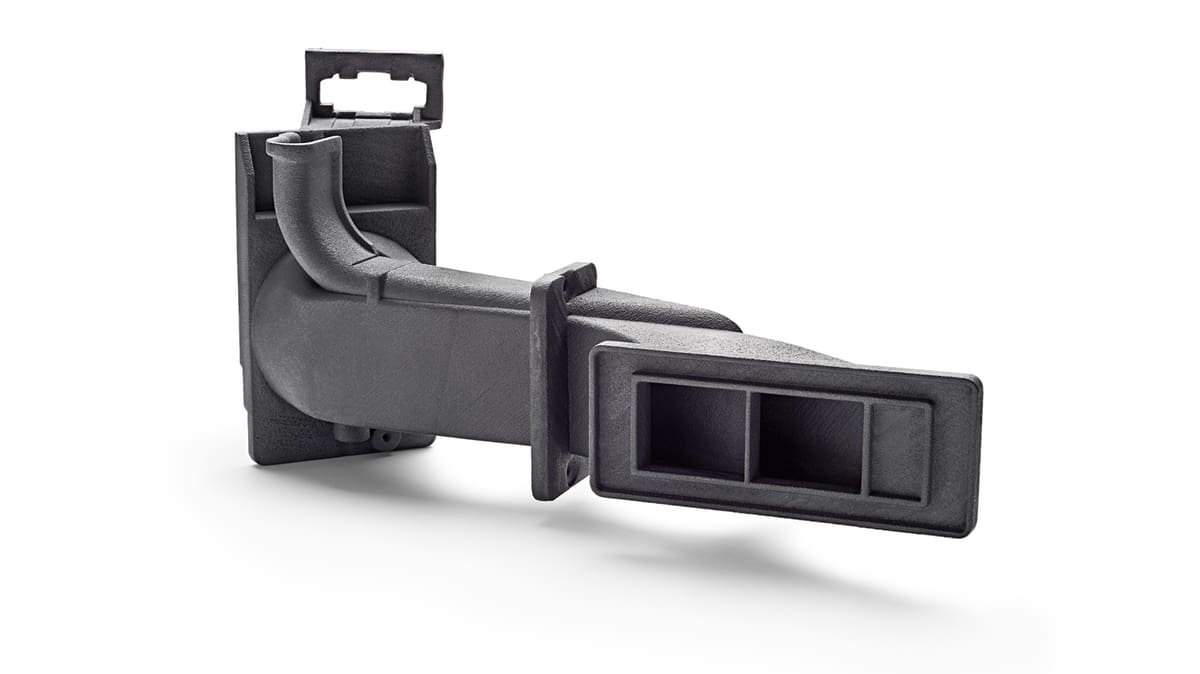
All 3D printing technologies build parts layer by layer, which may make you question if fluids or gasses could escape through those layers or if the layers themselves introduce any structural weaknesses compared to injected molded parts or cast parts. The answer is perhaps, but it depends on the technology and the printer.
Fused deposition modeling (FDM) is the type of 3D printing that uses (usually) polymer cords of material. As the polymer passes through the extruder, it’s heated to near melting before it passes through a nozzle to form a part on a print bed. The molten plastic bonds to the plastic of the previous layer. If you were to 3D print a flower vase with this technology, whether or not it would leak water would depend on a number of factors, including how thick the walls of the vase were, the type state of your material (was it left out to absorb moisture), how long one layer was left to cool before another layer was attached. In other words, when it comes to FDM, there are machines, materials, and practices that can ensure a completely watertight vase, and then there are lower quality machines and materials and substandard practices that would likely produce a leaky vase.
The interlayer bonding could withstand the pressure of two liters of water but not withstand the pressure of 10 liters of water.
Selective laser sintering (SLS) is a method of 3D printing that uses a laser to melt a polymer powder one small slice of the part at a time. New powder is spread over the previously lasered layer so that the laser can melt another layer to the layer underneath. SLS can create less visible layer lines than FDM but there are still layers. Like with FDM, SLS is a matter of machine and proper practices to ensure strong layer bonding.
Multi Jet Fusion (MJF) is a method of 3D printing that uses a liquid bonding agent to fuse powdered materials together layer by layer. Research has shown that although SLS and MJF are both powder technologies, MJF obtains better interlayer melting and adhesion compared to what is it possible to achieve with SLS. Similar technologies to MJF include High Speed Sintering (HSS) from 3D printer maker Voxeljet and Selective Absorption Fusion (SAF) from 3D printer maker Stratasys.
Metal laser powder bed fusion (LPBF) is the most popular type of 3D printing metal parts. The lasers used to melt the metal powder, layer on top of layer, create parts with comparable mechanical characteristics to metal injection molding. This method is commonly used for fluid and gas management parts ranging from connectors to rocket thrusters.
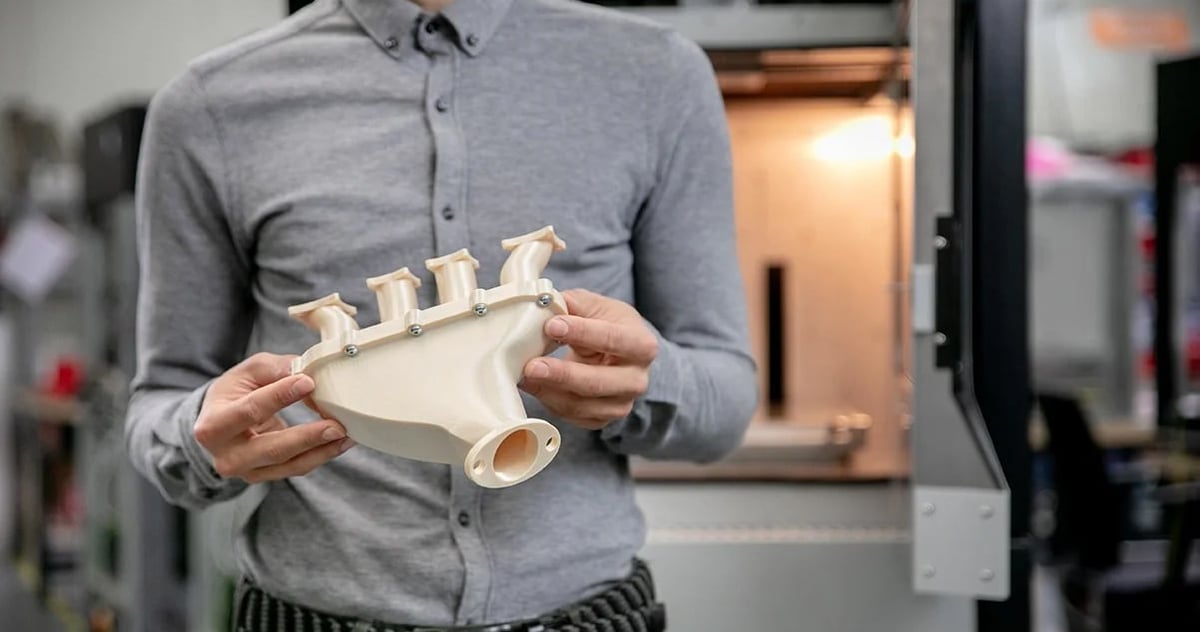
Advanced Plastics & Metals for 3D Printing
Although metals, such as aluminum and stainless steel, have been the traditional materials of choice for many fluid and gas part applications, advanced polymers, such as PEEK and carbon-fiber infused nylon are new favorites for their lighter weight.
3D Printing at a Professional Service

At a 3D printing service, you’ll receive a price quote in advance as soon as you upload your digital file, although some companies may not provide an instant quote and instead get back to you via email.
We uploaded a relatively simple connector to three top services for fabrication in a polymer (nylon PA12) and a metal (stainless steel) to give you a sense of the prices and delivery times you can expect.
Impressive Examples of Fluid and Gas Management Parts
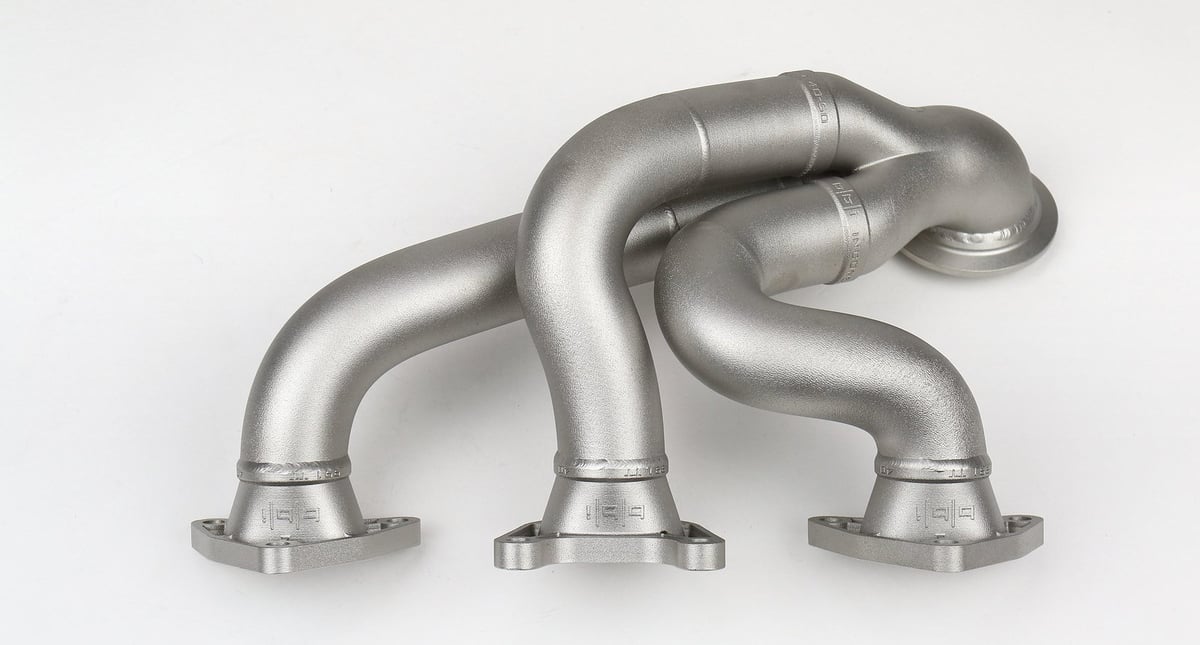
(Above) These BBi Autosport Porsche Turbo Race Headers featuring optimized exhaust runner lengths and merge collectors made from Inconel using metal laser powder bed fusion 3D printing. The materials is Inconel rather than stainless steel for its superior thermal fatigue strength, anti-corrosion and heat resistance properties, according to BBi.
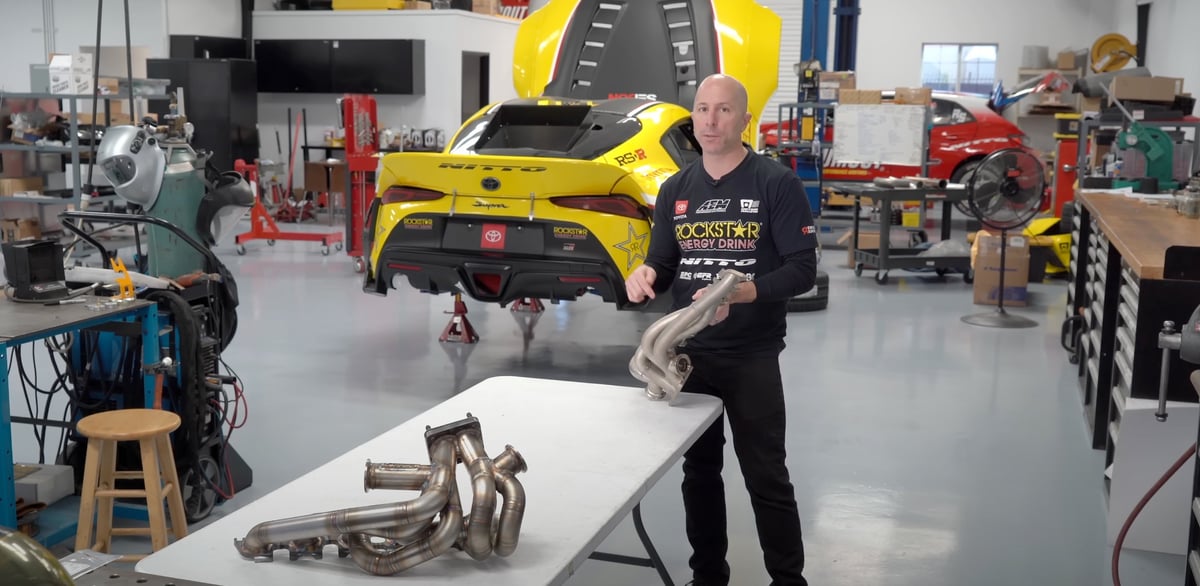
(Above) Stefan Papadakis of Papadakis Racing holding a 3D printed header for a GR Supra engine made in Inconel 625 metal. The part was printed in sections by Mimo Technik on Nikon SLM 3D printers. In his detailed video, Papadakis explains how the part was designed and fabricated.
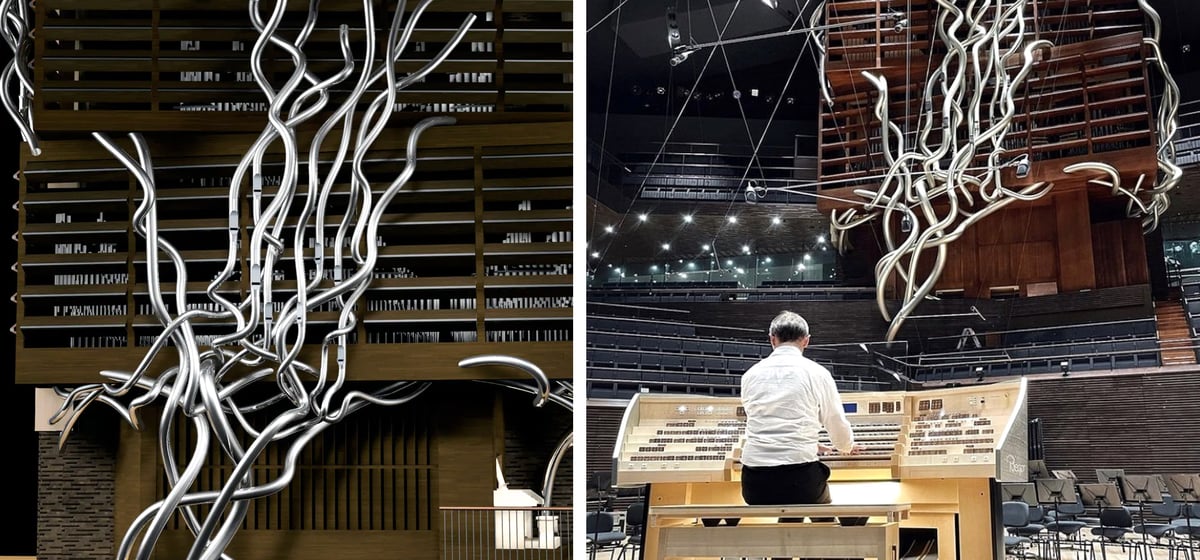
The Helsinki Music Centre unveiled its long-awaited new concert organ in January 2024. The 124-stop organ has the distinction of being the largest modern concert hall organ in the world. It is also one of only two instruments of this kind that can also be considered works of art in their own right. The external, winding pipes that are decorative and functional were 3D printed from a biocomposite material.
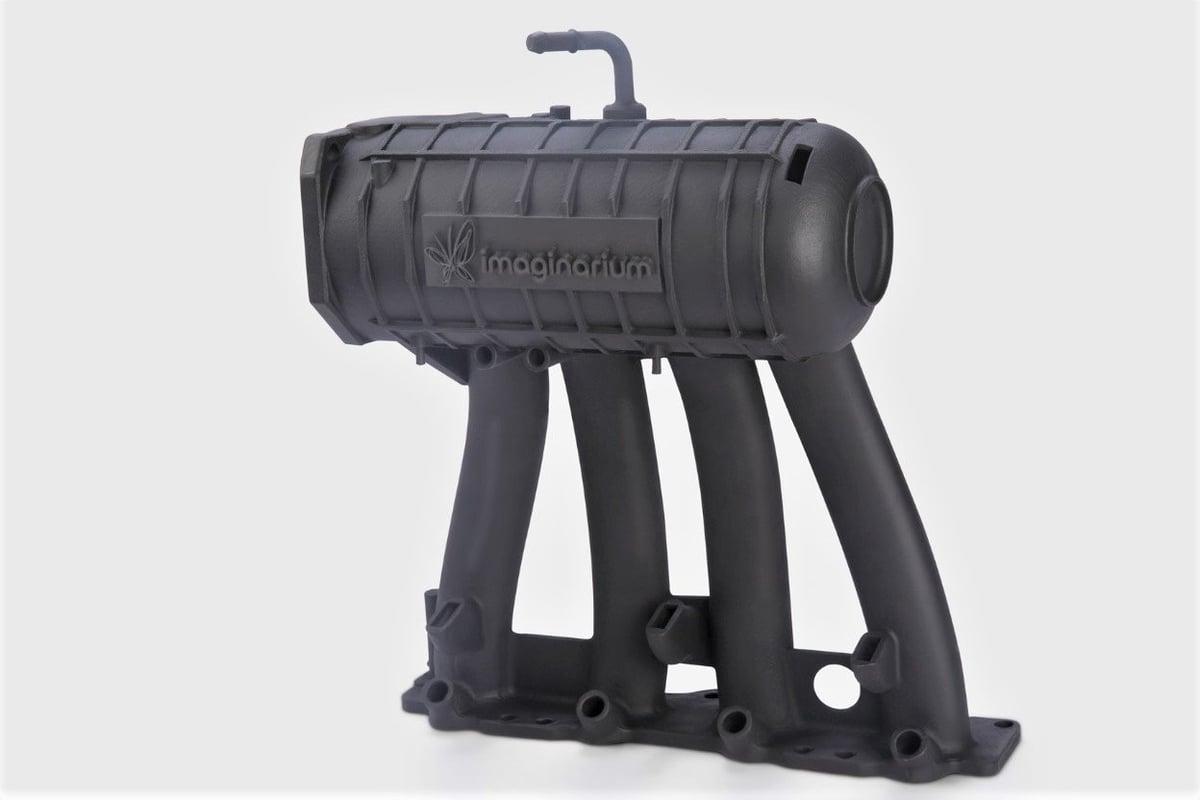
(Above) Orion Racing was one of the first racing teams in India to replicate the carbon fiber chassis of a Formula 1 car using 3D printing. After being told their intake manifold design was too complex, the team turned to 3D printing service Imaginarium to develop the manifold and chassis using 3D printing. The parts were printed in PA 12 nylon on an SLS machine and provided an overall weight reduction to the vehicle.
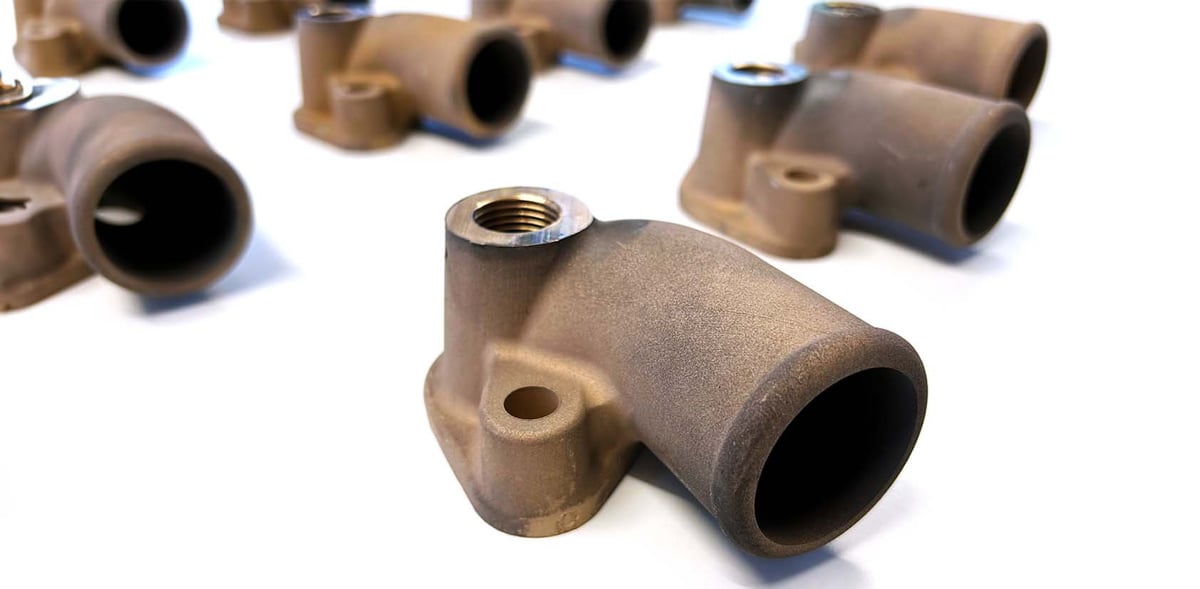
(Above) MAN Truck & Bus recently faced the challenge of urgently having to acquire 10 bronze manifolds for the cooling water supply of a marine engine, but they were no longer made. The conventional procurement methods involving the creation of models, casting, and mechanical machining would have been both time and cost-intensive for only 10 parts. MAN scanned the part to create a digital file and turned to 3D printing service company Replique to print the parts in a bronze alloy. Strength tests conducted at MAN’s Central Material Technology department revealed that the chosen material actually exhibited better technical properties than the original, according to Replique.
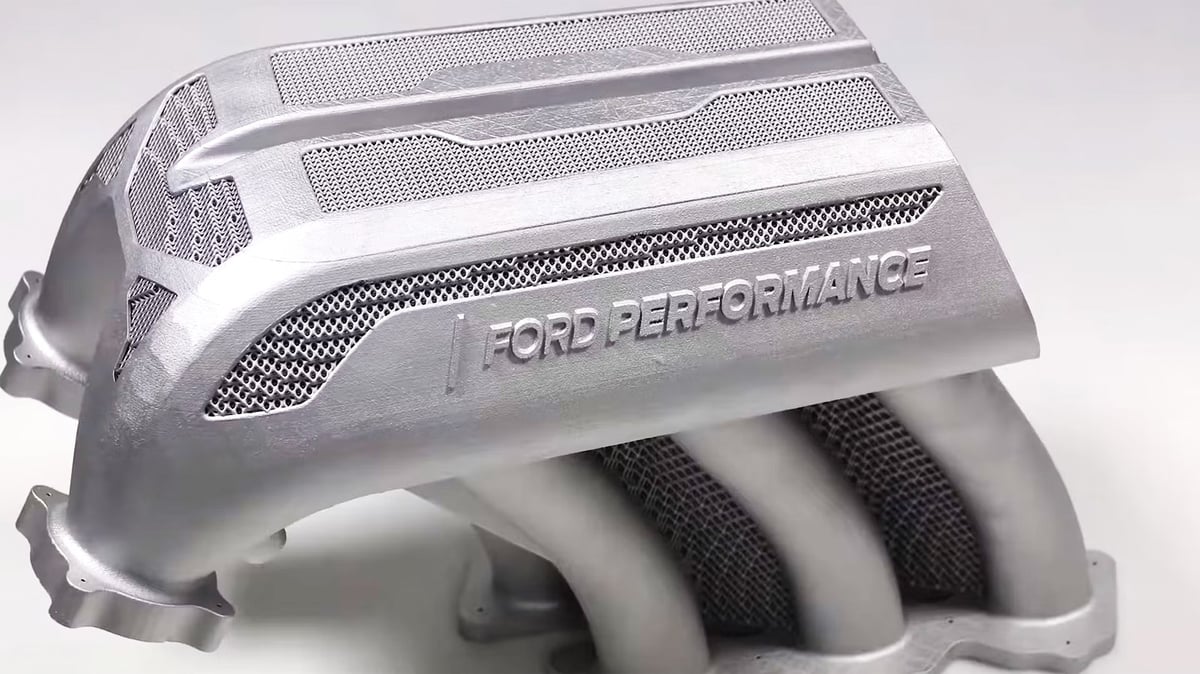
(Above) The custom Hoonitruck from Ford featured this 3D printed manifold, which was one of the largest metal 3D printed parts for a working vehicle in automotive history. Ford Performance engineers in the U.S. ran engine performance simulations and collaborated with a team of Ford research engineers based in Europe to design the part and conduct structural analysis. Working together with RWTH Aachen’s Digital Additive Production Institute, in Germany, the team built an intricate aluminium intake manifold that supplies air from the turbochargers to the engine’s cylinders.
License: The text of "How to 3D Print Manifolds and Pipes for Professional Use" by All3DP Pro is licensed under a Creative Commons Attribution 4.0 International License.
